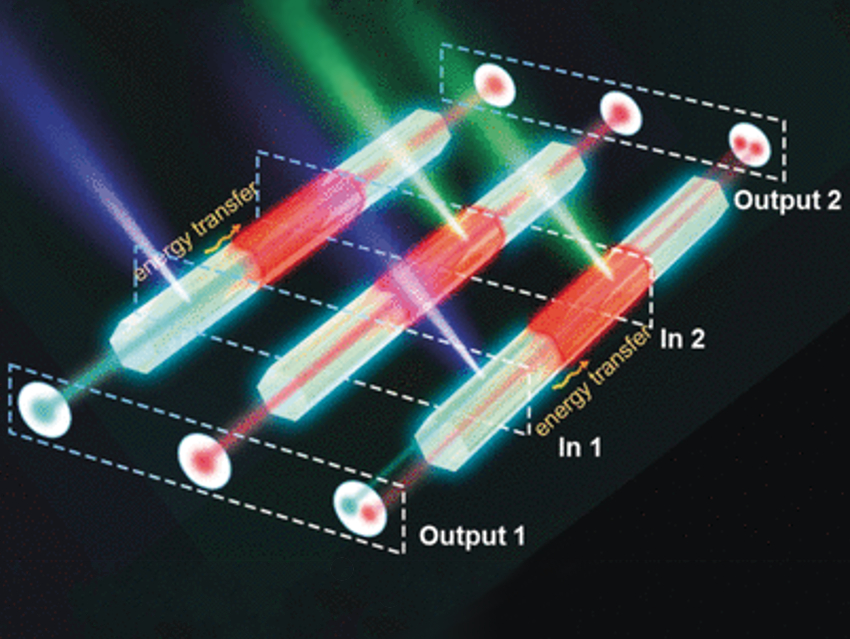Lighting the Way to Optical Circuits
It may be possible to reach new levels of miniaturization, speed, and data processing with optical quantum computers, which use light to carry information. For this, we need materials that can absorb and transmit photons. Ze Chang, Xian‐He Bu, Nankai University and Collaborative Innovation Center of Chemical Science and Engineering, both Tianjin, China, and colleagues have developed a new strategy for constructing photonic heterostructure crystals with tunable properties. Using a crystalline rod with stripes that fluoresce in different colors, they have developed a prototype of a logic gate.
The team achieved this by using specially constructed metal–organic frameworks (MOFs)—lattice-like structures made of metallic nodes bridged by organic ligands. These structures contain cage-like cavities that can hold other molecules as guests. In this case, the guests and a part of the ligands integrated into the lattice are matched so that the guests can transfer electrons to the ligand molecule (charge transfer). Such systems tend to fluoresce. The color of the fluorescence for a given MOF depends on the type of guest.
“Striped” Rod-Shaped Crystals
A further advantage of MOF structures is that their crystallization occurs through the growth of layers onto a crystallization nucleus in one preferred direction. The researchers were thus able to produce rod-shaped crystals. During the crystallization, they varied the types of guest molecule incorporated. This resulted in “striped” rods with separate domains that fluoresce differently.
For example, they produced rods whose ends absorb UV light and fluoresce blue-green, while the center absorbs visible green light and emits red light. Because they are in direct contact, energy can be transferred between the domains, and some of the blue-green photons can be transmitted to the center portion, thereby causing it to fluoresce red. Most importantly, these rods behave as light conductors, meaning that no matter which spot is irradiated, part of the fluorescence light is transported through the entire rod to its ends.
Based on this type of crystal, the researchers developed a prototype for a logic circuit with two “entrances” and two “exits”; that is, locations where light can be stored or registered and red and/or blue-green signals generated, respectively. The researchers envision potential applications for their MOF crystals in components with integrated optical circuits, such as photonic diodes, on-chip signal processors, and optical logic gates.
- Engineering Donor-Acceptor Heterostructure Metal-Organic Framework Crystals for Photonic Logic Computation,
Xiao-Ting Liu, Kang Wang, Ze Chang, Ying-Hui Zhang, Jialiang Xu, Yong Sheng Zhao, Xian-He Bu,
Angew. Chem. Int. Ed. 2019.
https://doi.org/10.1002/anie.201906278



![Synthesis of [c2]Daisy Chains via Mechanochemistry](https://www.chemistryviews.org/wp-content/uploads/2025/04/202504_RotaxanesWithSolidStateMechanochemistry-125x94.png)
